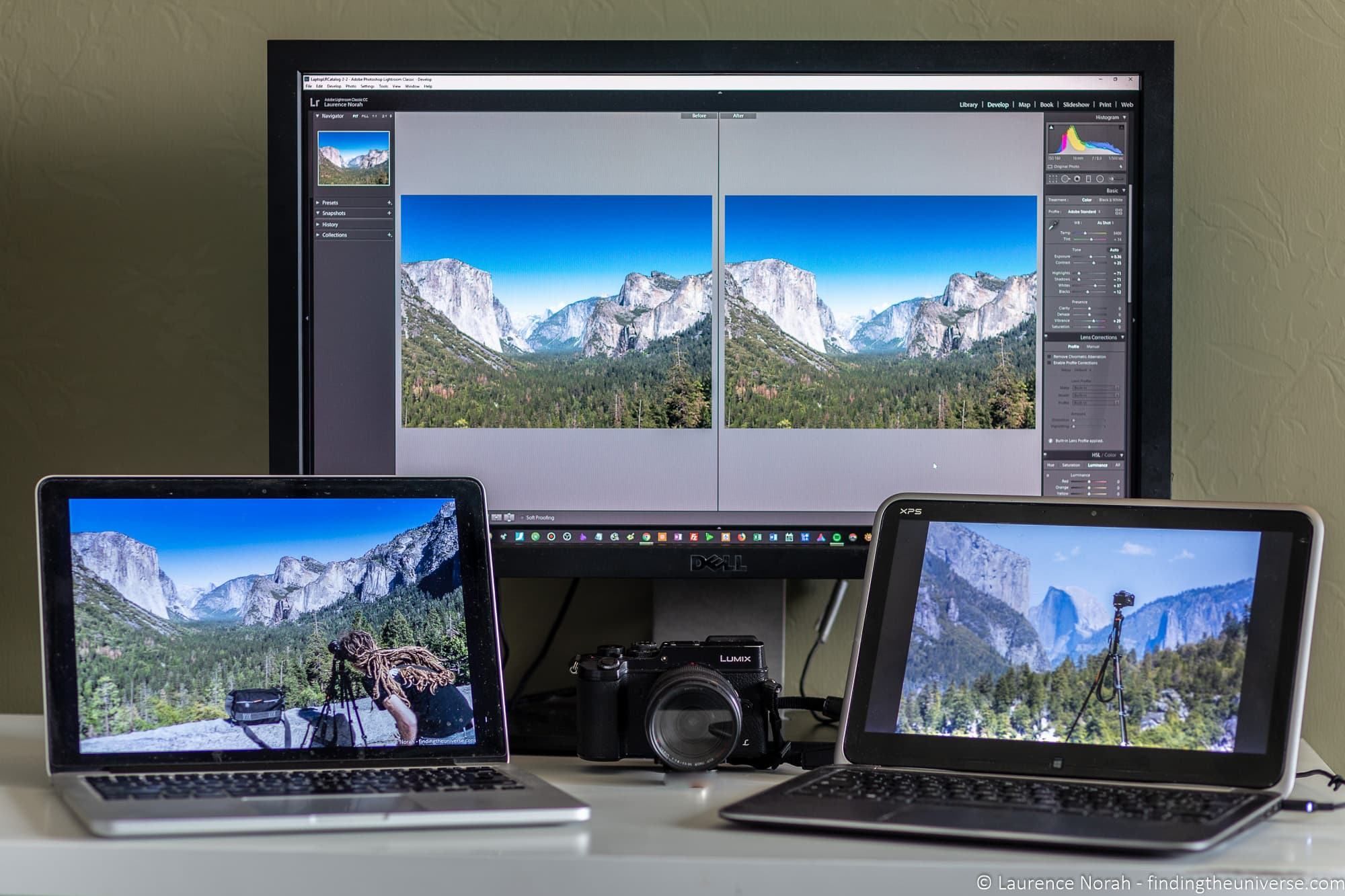

When it comes to selecting the perfect laptop for photo editing and design work, there are numerous factors to consider. Let’s explore this topic in more detail with Shady Bears below. The right device can significantly enhance your creative workflow, while the wrong choice may lead to frustration and subpar results. Let’s learn more about this topic below with Shady Bears, as we dive into the essential features and specifications that make a laptop ideal for photo editing and design tasks.
Before delving into specific laptop recommendations, it’s crucial to assess your individual needs as a photo editor or designer. Different professionals may require varying levels of performance, portability, and specialized features. Consider the following factors:
Software Requirements: Determine which photo editing and design software you’ll be using most frequently. Popular choices include Adobe Photoshop, Lightroom, Illustrator, and InDesign. Each program may have specific hardware requirements that your chosen laptop should meet or exceed.
Workload Intensity: Evaluate the complexity of your projects and the size of the files you typically work with. If you’re dealing with large RAW image files or creating intricate designs with multiple layers, you’ll need a more powerful machine to handle the workload efficiently.
Portability vs. Performance: Decide whether you prioritize a lightweight, portable laptop for on-the-go editing or a larger, more powerful device for intensive studio work. This decision will influence factors such as screen size, battery life, and overall system specifications.
Budget Considerations: Determine your budget range, keeping in mind that investing in a high-quality laptop for photo editing and design can significantly impact your productivity and the quality of your work.
Read more: Things to Know Before Buying a Laptop Online
When choosing a laptop for photo editing and design, several key specifications should be at the top of your priority list:
Processor (CPU): The CPU is the brain of your laptop, responsible for executing commands and running software. For photo editing and design work, opt for a powerful processor from Intel’s Core i7 or i9 series, or AMD’s Ryzen 7 or 9 series. These high-performance CPUs can handle complex tasks and multitasking with ease.
Graphics Card (GPU): While integrated graphics can suffice for basic photo editing, a dedicated GPU is highly recommended for more demanding tasks and smoother performance. Look for laptops with NVIDIA GeForce RTX series or AMD Radeon RX series graphics cards. These GPUs accelerate rendering times and provide better support for graphics-intensive applications.
RAM: Random Access Memory (RAM) is crucial for smooth multitasking and handling large files. For photo editing and design work, aim for a minimum of 16GB of RAM, with 32GB or more being ideal for professional-level tasks. More RAM allows you to work with multiple high-resolution images and run several resource-intensive applications simultaneously without experiencing slowdowns.
Storage: Opt for a solid-state drive (SSD) as your primary storage solution. SSDs offer significantly faster read and write speeds compared to traditional hard disk drives (HDDs), resulting in quicker boot times, faster application launches, and improved overall system responsiveness. A capacity of 512GB or 1TB is recommended to store your projects and applications comfortably. Consider a laptop with additional storage options, such as a secondary HDD for archiving larger files or cloud storage integration for seamless backups.
Display: The quality of your laptop’s display is paramount for accurate color representation and detail visibility. Look for laptops with IPS (In-Plane Switching) panels, which offer superior color accuracy and wider viewing angles compared to TN (Twisted Nematic) displays. Aim for a resolution of at least 1920×1080 (Full HD), with 4K (3840×2160) being ideal for more precise editing work. Pay attention to color gamut coverage, with 100% sRGB coverage being the minimum standard, and wider gamuts like Adobe RGB or DCI-P3 offering even better color reproduction for professional work.
Color Accuracy: Some laptops come with factory-calibrated displays, ensuring accurate color representation out of the box. If your chosen laptop doesn’t offer this feature, consider investing in a color calibration tool to maintain consistent colors across different devices and ensure your work appears as intended on various screens.
Screen Size: The ideal screen size depends on your personal preference and portability requirements. Larger screens (15-17 inches) provide more workspace and are better suited for detailed editing, while smaller screens (13-14 inches) offer greater portability. Consider your workflow and whether you frequently work on external monitors when making this decision.
In addition to the core specifications, several other factors contribute to a laptop’s suitability for photo editing and design work:
Build Quality: Look for laptops with sturdy construction, preferably featuring metal chassis or high-quality plastic builds. A durable laptop will better withstand the rigors of daily use and transportation.
Keyboard and Touchpad: Comfortable input devices are essential for long editing sessions. Look for laptops with well-spaced, responsive keyboards and precise touchpads. Some models offer backlit keyboards, which can be helpful when working in low-light environments.
Ports and Connectivity: Ensure your chosen laptop has a good selection of ports to accommodate your peripherals and external devices. Look for USB 3.1 or USB-C ports, Thunderbolt 3 or 4 support for high-speed data transfer and external display connections, an SD card reader for easy file transfers from cameras, and an HDMI port for connecting to external monitors or projectors.
Wi-Fi and Bluetooth: Opt for laptops with the latest Wi-Fi 6 (802.11ax) standard for faster and more reliable wireless connections. Bluetooth 5.0 or later is also beneficial for connecting wireless peripherals and accessories.
Battery Life: While not as critical for studio-based work, good battery life is essential if you frequently edit on the go. Look for laptops that offer at least 8-10 hours of battery life under normal usage conditions.
Cooling System: Photo editing and design tasks can be demanding on your laptop’s hardware, generating significant heat. Choose a laptop with an efficient cooling system to maintain optimal performance during extended editing sessions and prevent thermal throttling.
Read more: Best Laptops Under 1000 for Everyday Use
Now that we’ve covered the essential specifications and features to look for, let’s explore some top laptop recommendations for photo editing and design work:
The Dell XPS 15 is a powerhouse laptop that excels in photo editing and design tasks. It features a stunning 15.6-inch 4K OLED display with 100% DCI-P3 color gamut coverage, ensuring exceptional color accuracy and vibrant visuals. Configured with an Intel Core i7 or i9 processor, NVIDIA GeForce RTX 3050 Ti graphics, up to 64GB of RAM, and fast NVMe SSD storage, the XPS 15 delivers outstanding performance for even the most demanding creative workflows. Its premium build quality, excellent keyboard, and comprehensive port selection make it a top choice for professionals.
For those who prefer macOS, the MacBook Pro 16-inch is an excellent choice. Powered by Apple’s M1 Pro or M1 Max chip, it offers exceptional performance and energy efficiency. The 16-inch Liquid Retina XDR display provides stunning visuals with up to 1600 nits of peak brightness and support for the P3 wide color gamut. With up to 64GB of unified memory and fast SSD storage options, the MacBook Pro handles complex photo editing and design tasks with ease. The inclusion of an SD card slot and HDMI port adds convenience for creative professionals.
The HP Spectre x360 16 combines power and flexibility in a sleek 2-in-1 design. Its 16-inch 4K OLED touchscreen display offers excellent color accuracy and supports pen input, making it ideal for digital artists and designers who prefer a more tactile approach. Equipped with Intel Core i7 processors, NVIDIA GeForce RTX 3050 graphics, and up to 32GB of RAM, the Spectre x360 delivers strong performance for photo editing and design work. The convertible form factor allows for versatile usage scenarios, from traditional laptop mode to tablet mode for precise pen input.
For those on a tighter budget, the ASUS VivoBook 15 OLED offers impressive features at a more accessible price point. It features a 15.6-inch OLED display with 100% DCI-P3 color gamut coverage, providing excellent color accuracy for photo editing. While not as powerful as the high-end options, its AMD Ryzen 5 or 7 processors, integrated Radeon graphics, and up to 16GB of RAM still offer respectable performance for most photo editing and design tasks.